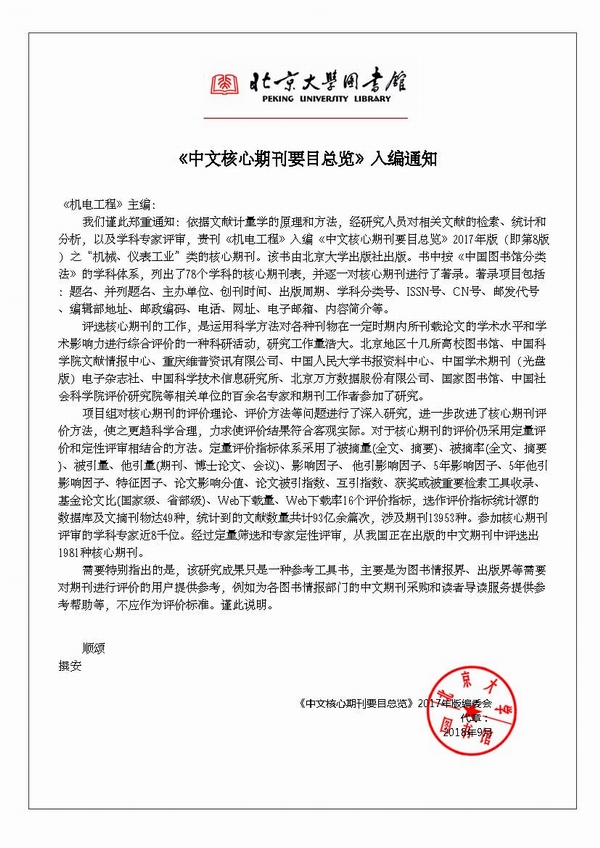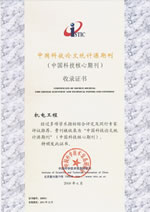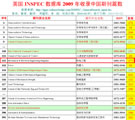
Founded in 1971 >
Chinese Sci-tech Core Periodicals >
British Science Abstracts (SA, INSPEC) Indexed Journals >
United States, Cambridge Scientific Abstract: Technology (CSA: T) Indexed Journals >
United States, Ulrich's Periodicals Directory(UPD)Indexed Journals >
United States, Cambridge Scientific Abstract: Natural Science (CSA: NS) Indexed Journals >
Poland ,Index of Copernicus(IC) Indexed Journals >
International Standard Serial Number:
ISSN 1001-4551
Sponsor:
Zhejiang University;
Zhejiang Machinery and Electrical Group
Edited by:
Editorial of Journal of Mechanical & Electrical Engineering
Chief Editor:
ZHAO Qun
Vice Chief Editor:
TANG ren-zhong,
LUO Xiang-yang
Tel:
86-571-87041360,87239525
Fax:
86-571-87239571
Add:
No.9 Gaoguannong,Daxue Road,Hangzhou,China
P.C:
310009
E-mail:
meem_contribute@163.com
Abstract: To address the problem that the blade surface roughness changed due to erosion and abrasion and particle adhesion during the mixing process, the influence of the blade surface roughness on the mixing performance was investigated by experimental methods. Firstly, microscopic and macroscopic roughness elements with different particle sizes were selected and glued to different parts of the blade to build different test structures. Then experimental tests were carried out for each test structure, and the torque of the stirring shaft was measured by the torque sensor on the test device and the stirring power was calculated, and the potential difference was measured by the conductivity method and the mixing time was calculated. Finally, the experimental data were compared and analyzed in terms of power and mixing time. The results show that comparing with smooth blades, setting the whole surface roughness on the blade pressure surface, suction surface and both sides can increase the mixing power by about 5% or more. The roughness at the leaf root of the suction surface and the guide edge of the suction surface can increase the power by about 5%—15%. For different sizes of roughness, the larger the roughness, the greater its effect on power. The roughness in the area of suction surface and pressure surface leaf root can significantly promote the dissolution of NaCl in the mixing tank and increase the diffusion rate. The mixing time is reduced by about 14% when the rotational speed was 180 r/min. The surface roughness had less effect on the mixing time when the rotational speed was increased to 360 r/min. Although the surface roughness of the stirrer will increase the torque and stirring power, the mixing time can be shortened at a suitable stirring speed, which is beneficial to stirring and mixing.
Key words: stirrer; stirring performance;surface roughness;stirring power; mixing time








